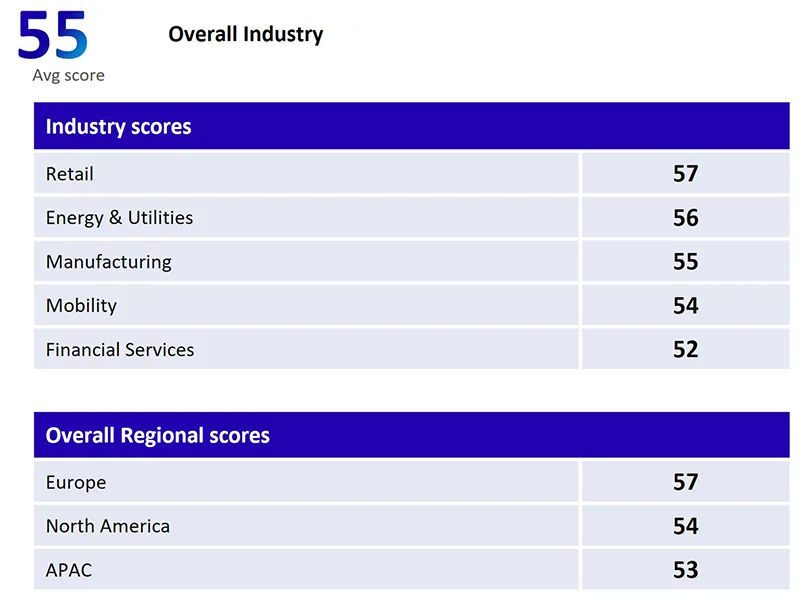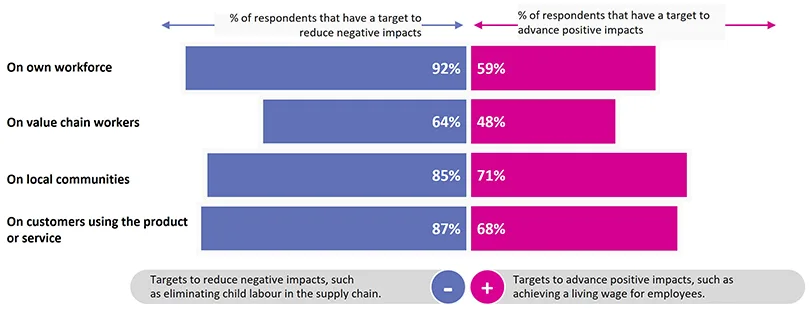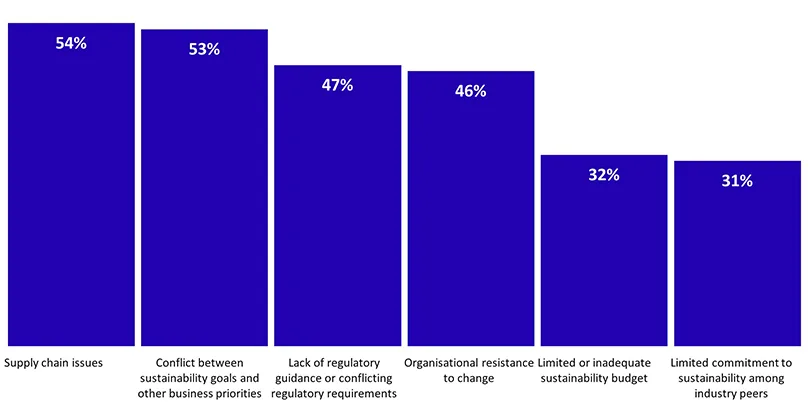This post was originally published on WBCSD
Across the global economy, the expectations placed on businesses are evolving at a remarkable pace. Customers, regulators, investors, and society at large now demand that organizations take real, meaningful action to address environmental challenges, social injustices, and economic imbalances. In this new era, it isn’t enough to do “less harm”—the goal must be to create positive, lasting value for people and the planet.
This is what we mean by “Net Positive.” It’s a business approach where companies not only aim to minimize their social and environmental footprint, but also actively create a positive handprint – or impact – that contribute to long-term sustainability and the well-being of people and the planet. Leaders like Paul Polman, former CEO of Unilever, have championed this idea for years, stating it’s about “improving well-being for everyone it impacts and at all scales — every product, every operation, every region and country, and for every stakeholder, including employees, supplier, communities, customers, and even future generations and the planet itself.*1” Importantly, this approach doesn’t abandon profit; rather, it recognizes that tackling the world’s biggest shared problems leads to long-term success.
At Fujitsu, this vision resonates deeply with our purpose of making the world more sustainable through innovation. We believe technology should serve humanity, not the other way around. To understand where businesses stand today—and to help guide our customers and partners—we created the Net Positive Index, developed and researched by Economist Impact. Based on the input of 1,800 executives and decision-makers across 17 countries, the Index measures how well organizations are turning good intentions into real-world impact. Our goal isn’t just to score companies—it’s to help identify barriers, highlight opportunities, and point toward a brighter, more equitable Net Positive future.
From footprints to handprints: What we’re measuring
For decades, businesses have focused on reducing their footprint—cutting carbon emissions, minimizing waste, or ensuring fair labor practices in supply chains. While reducing harm is essential, it often results in doing ‘less bad.’ Net Positive thinking pushes further by emphasizing handprints: the positive contributions companies make. These include creating good jobs with fair wages, supporting local communities, innovating sustainable products, and restoring ecosystems. Simply striving for ‘net zero’ is no longer enough. Addressing today’s urgent challenges requires businesses to actively leave the world better off than they found it.
What we learned: The business case for Net Positive
Our research shows that companies increasingly recognize the economic upside of Net Positive strategies. Nearly all surveyed firms (97%) already use a mix of financial and non-financial metrics, signaling a broad acknowledgment that profit alone doesn’t capture a company’s true worth. Many leaders see these strategies as essential for building trust, winning customer loyalty, and staying ahead of future regulations. By fostering transparency and accountability, businesses position themselves to navigate an unpredictable future with confidence.
In practice, Net Positive moves translate into tangible benefits. Sustainable supply chains reduce risk and improve resilience. Ethical labor practices attract top talent and reduce turnover. Energy-efficient operations save money in the long run. Socially minded innovations open up new markets and drive growth. It’s no wonder that investors are showing more interest in companies that take environmental and social responsibilities seriously—they know these firms are better equipped to thrive over the long term.
The current status: Good intentions but work in progress
Despite the clear advantages, turning ambition into action remains a work in progress. The Net Positive Index reveals that most organizations still have a long way to go. The average Index score sits around 55 out of 100, suggesting that while awareness is high, follow-through isn’t always there. Over half the surveyed organizations report conflicts between sustainability goals and other business prioritiessay they feel tension between sustainability goals and short-term financial targets, reflecting the everyday challenge of balancing big-picture thinking with immediate returns.

Different industries are advancing at different speeds. Manufacturers often lead when it comes to cutting carbon and waste—largely because it affects their bottom line. Service-based firms may have more room to innovate on improving workforce well-being or deepening community relationships. Still, no industry stands out as having fully embraced a Net Positive mindset. It’s a reminder that we are all still learning how to shift from compliance-driven “less bad” approaches to genuinely additive, positive strategies.
Why isn’t change happening faster?
If the benefits of a Net Positive approach are so clear, why are many companies still struggling to accelerate their progress? One major reason is that many organizations remain stuck in a traditional ESG mindset. “ESG mindset.” Rather than focusing on creating proactive, positive impacts, they fixate on minimizing harm and meeting compliance standards. For example, companies are 20 percentage points more likely to set targets for reducing negative impacts—such as cutting carbon emissions or eliminating forced labor—than for creating outcomes like paying living wages or enhancing community well-being. While important, this focus on “less bad” often overlooks the transformative potential of Net Positive thinking.

Additionally, when companies do make progress, it tends to skew heavily toward environmental sustainability. While many organizations are investing in reducing their carbon footprints and optimizing resource use, social issues—such as human rights protections and labor practices—receive comparatively less attention. This imbalance risks neglecting critical stakeholders like employees and local communities, potentially leading to reputational and operational challenges down the line.
Complex supply chains add another layer of difficulty. While 92% of organizations track direct emissions (those they control directly), only 57% measure indirect emissions deeper in their supply networks and 4% disclose emissions across most material categories of scope 3 emissions. This gap makes it harder to uncover hidden inefficiencies, poor labor conditions, or environmental hot spots. Beyond supply chain challenges, a lack of regulatory guidance and organizational resistance to change remain significant barriers. Many organizations hesitate to adopt transformative ideas that disrupt entrenched practices, slowing progress toward more sustainable and responsible operations.

The Net Positive Index also reveals that most organizations anticipate the benefits of a Net Positive approach as being primarily financial. Cost savings through efficiency emerged as the top expected advantage, alongside reduced climate risk and increased operational resilience. While these are important drivers, companies must balance these tangible returns with a broader vision of societal and environmental impact. Without a strategic reset that moves Net Positive from the sidelines to the center of business planning, progress will remain uneven.
Where success is emerging—and opportunities for moving forward
Despite these challenges, there are clear signs of progress. Some companies are broadening their definition of value, moving beyond compliance to drive real improvements in people’s lives and the environment. For example, 63% of organizations are beginning to integrate social and environmental targets alongside financial metrics, although these often remain secondary to profit goals.
Retail, the top-performing industry on the Index, exemplifies this trend. Retailers lead in transparency, with many disclosing how they monitor health, safety, and fair wages in their supply chains, highlighting the power of data-driven decision-making to foster trust and accountability.
Collaboration is another encouraging area of growth. Companies are increasingly partnering with NGOs, governments, and even competitors to tackle systemic issues such as climate change and labor rights violations in supply chains. However, just 26% of companies give NGOs or independent actors open access to review their supply chain (eg, to assess supplier labour practices) across a majority of their product/service portfolio, and there is still room to grow. There remains significant room for improvement.
Data and technology also plays a pivotal supporting role in these advances. Across industries, companies that are employing technology and other tools to support their sustainability efforts are more likely to be tracking ahead on revenue and profit goals. However, there are still gaps in responsible adoption: 45% of companies lack processes to assess the negative impacts of new technologies, and 44% lack frameworks to manage trade-offs. Bridging these gaps will enable organizations to not only avoid harm but also amplify their contributions to Net Positive outcomes.
How technology can help drive Net Positive action
Technology is a critical enabler for businesses seeking to transform Net Positive aspirations into measurable outcomes.
For example, data intelligence platforms provide real-time insights into labor practices and carbon hotspots, enabling companies to identify and address gaps effectively. Sustainable manufacturing systems reduce waste and energy use while creating more stable employment opportunities. Meanwhile, blockchain technologies are increasingly used to verify ethical sourcing and ensure supply chain accountability.

By adopting these technologies, companies can turn Net Positive principles into actionable strategies that drive both business performance and societal benefits. Fujitsu is committed to supporting this transition, offering innovative tools that bridge the gap between vision and reality.
Why start the journey—and how
Becoming Net Positive is not only the right thing to do—it’s also good for business. Customers increasingly support companies that share their values. Investors favor firms built for long-term resilience. Communities reward businesses that contribute to local well-being.
How to begin:
1. Shift Your mindset: Move beyond the idea of doing “less bad.” Recognize that every decision—whether it’s about resources, working conditions, or data privacy—can contribute to improving people’s lives.
2. Utilize your data: Data is your compass on the journey to Net Positive. Collect and analyze data to understand where you stand, where gaps exist, and where the most meaningful changes can be made. This visibility allows you to measure progress against clear, people-focused goals.
3. Leverage technology for insightful action: Technology can do more than streamline operations—it can uncover new opportunities to benefit people. By using AI, blockchain, and data analytics, you gain detailed visibility into your supply chains, resource use, and stakeholder needs. With reliable insights, you can pinpoint where to improve labor conditions, reduce environmental harm, and foster long-term trust.
4. Collaborate with purpose: True Net Positive impact often requires cooperation across diverse groups—suppliers, communities, NGOs, and more. But collaboration can’t happen in a flash. Use your data-driven insights to identify shared interests and specific areas for improvement. When everyone works with a shared purpose and with the same information, partnerships become more strategic, focused, and genuinely impactful. In this way, data paves the way for meaningful alliances that help everyone move forward together.
Turning vision into reality
Shifting from “less harm” to Net Positive is no small task. It demands rethinking traditional metrics, forging new alliances, and investing in transformative capabilities. Yet the rewards are significant: stronger stakeholder trust, more resilient operations, enhanced regulatory preparedness, and the enduring goodwill of customers, employees, and communities.
In an era defined by urgent social and environmental challenges, the question is not whether businesses should take action—it’s how quickly and effectively they can do so. By linking purpose with data-driven strategies, supported by responsible technologies, organizations can transcend compliance and truly contribute to a thriving future.
Now is the time to move beyond intentions and embrace a Net Positive mindset that secures lasting benefits for people, communities, and the planet.
This article first appeared on Fujitsu’s website on 26 February 2025.
Footnotes
- Reference: Paul Polman and Andrew Winston’s “Net Positive: How Courageous Companies Thrive by Giving More Than They Take” (Harvard Business Review Press, 2021) ↩︎
The post A Net Positive imperative: Why and how business must lead on sustainable, people-centered growth first appeared on WBCSD.



0 Comments